A small village where you can see the aurora
・・・・・・・・・・
Hello everyone, how are you all? This is Tanaka from GRIDFRAME.
<A company called GRIDFRAME>
I have been sending out the SOTOCHIKU Newsletter for a year, and this marks the second year. Thank you so much to all of you who read it. I will do my best to continue sending it out this year as well.
However, I’m sure there are many readers out there who don’t know what kind of company GRIDFRAME is in the first place.
So, at the beginning of our second year, which marks a milestone, I would like to give you a brief introduction to GRIDFRAME.
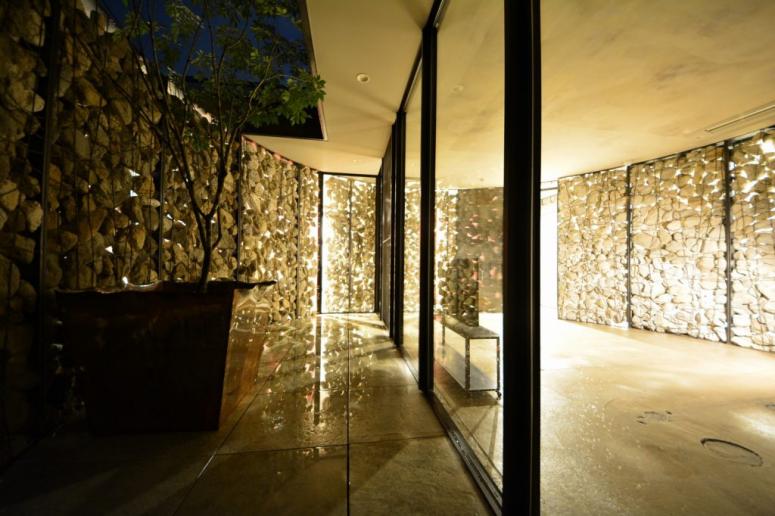
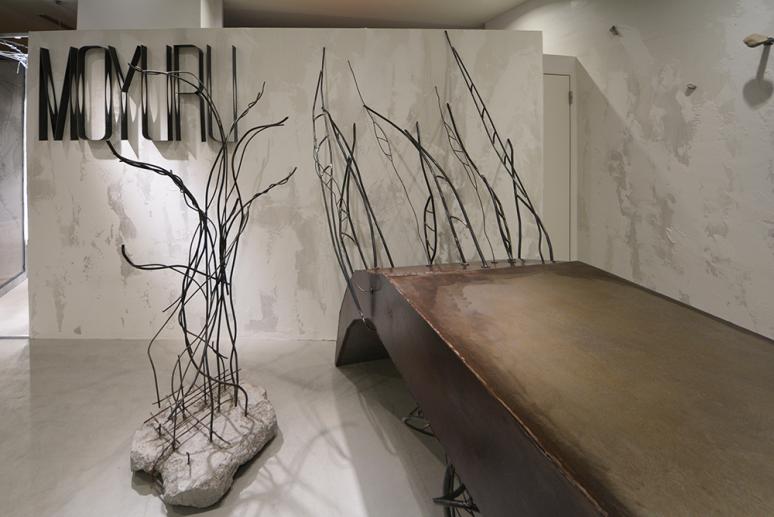
GRIDFRAME is a 27-year-old company founded in 1998, and has created over 500 different spaces to date, including stores, offices, studios, and homes. While we have designed some properties from the architecture up, in most cases we have handled the interior and exterior spaces of buildings, as well as fixtures and furniture.
Our headquarters and SOTOCHIKU showroom are located in Omotesando, and our own factory is located in Kinshicho, Sumida Ward. Pakuchi Bank in Kyonan Town, Chiba Prefecture is also a SOTOCHIKU showroom.
Our factory experiments and processes a wide range of materials, primarily metal, and we specialize in designing and constructing products that fit your concept using our unique finishes.
All staff members have studied architecture and art, and they design, plan, produce, and construct using a system called the “Chain of Creativity” (https://gridframe.co.jp/flow/), in which each member thinks for themselves and relays the creation process.
・・・・・・・・・・
At GRIDFRAME, we believe that there are four stages that a creator must face in creating a space: gathering materials → turning them into materials → processing them → creating a space, and we give each stage a project name.

1. Material collection SOTOCHIKU https://sotochiku.com/
…Facing the Earth and gathering materials to create spaces
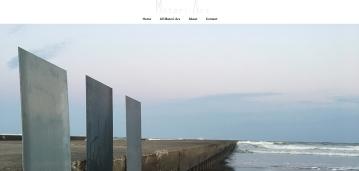
2. Materialization Materi-ars https://materi-ars.com/
…Face the material, make the necessary adjustments to make it work, and turn it into a material
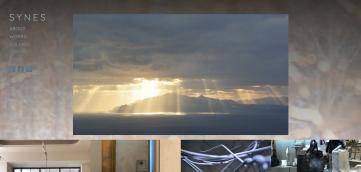
3. Processing Synesdesign https://synesdesign.com/
…Face the material, pursue the processing method, and turn it into parts
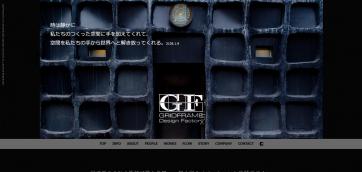
4. Spatialization Gridframe https://gridframe.co.jp/
…Facing the parts, they are assembled together with the traces of the above three stages to form
a space.
The breath of the earth, the breath of objects that remember human history, the breath of people who work without speaking every day…By creating while facing these things, a new space is born and begins to breathe towards the future.
Our aim is that the new space will eventually store memories of time, and one day materials will be harvested from it, and it will become a model that will continue to circulate in the next cycle.
Last year, we mainly reported on our activities in Noto, but this year we are determined not to let this cycle stop in order to continue. We would appreciate your continued support.
<SOTOCHIKU trailer ver.1>
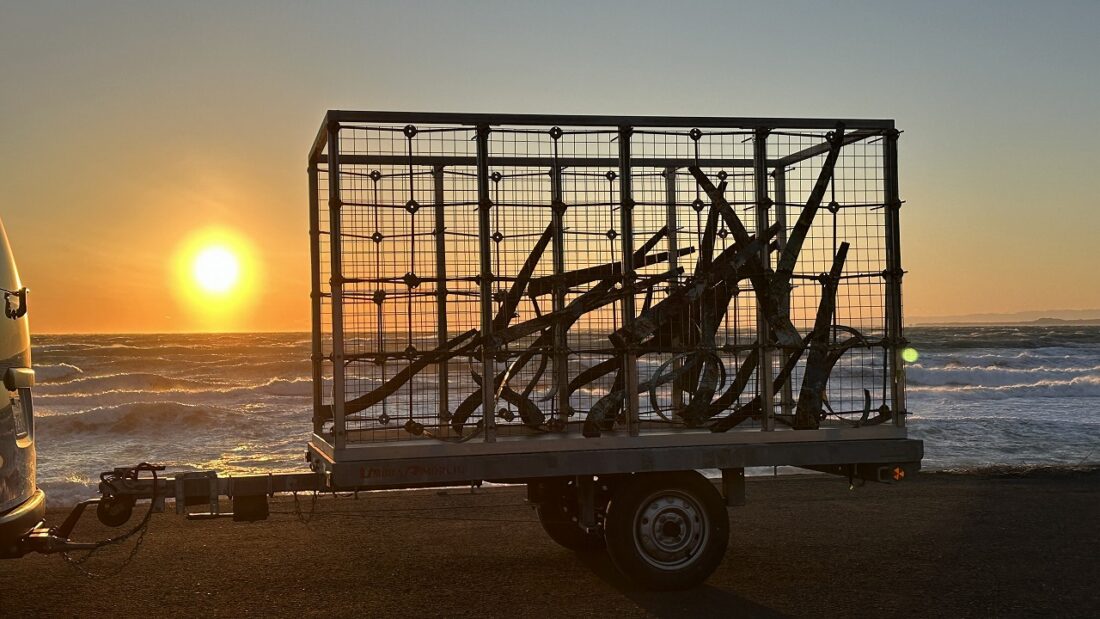
The trailer for the SOTOCHIKU Trailer Project, which we introduced in the previous issue, has been completed at Pakuchi Bank in Kyonan Town.
This is a small box attached to the wall with the GRIDFRAME system, which allows for the enjoyment of free creation, from instantly creating a space using materials available to carefully assembling after careful consideration. First, we checked to make sure that the screws would not loosen while driving. We also took measures to speed up assembly, and now it’s ready to go.
With this, you can go to Noto or Kyushu.
As a test, we sandwiched a piece of iron plate that had been split and bent by Kyo Saya and Hiroo Tokita at the 2nd Paint Miracle (April 2024) between the two plates and took a commemorative photo at Hota Beach in the sunset.
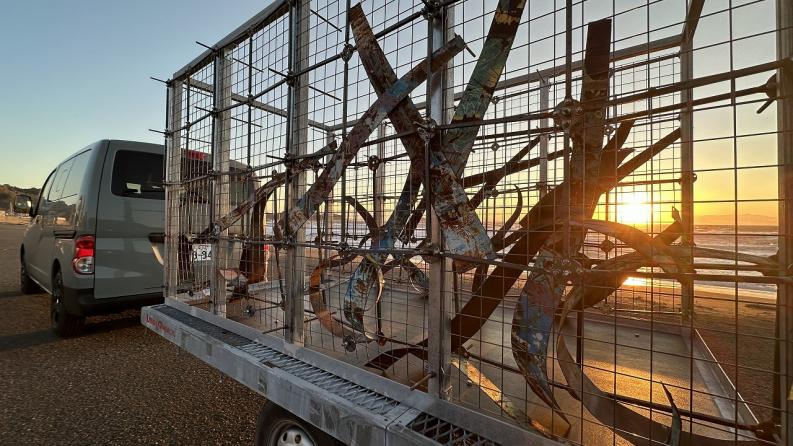

Afterwards, we moved to the SOTOCHIKU showroom in Omotesando for an open house unveiling, where we displayed the piece with driftwood we picked up at Hota Beach.
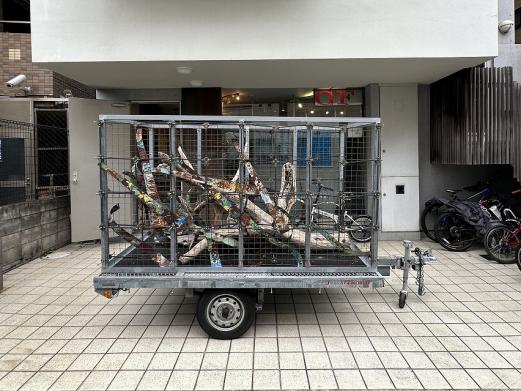
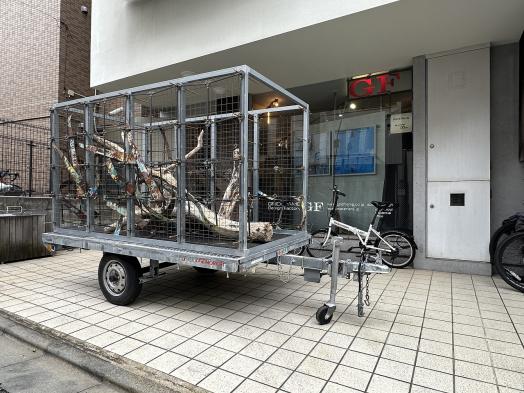
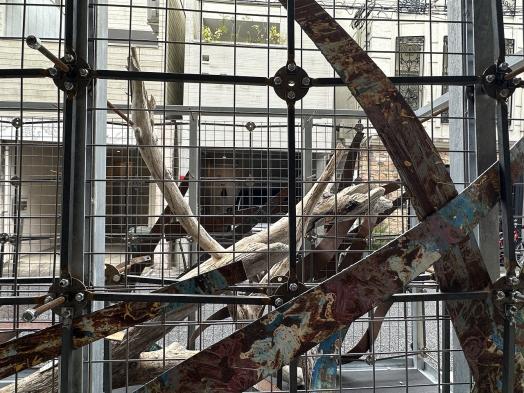
<SOTOCHIKU Showroom 202501>

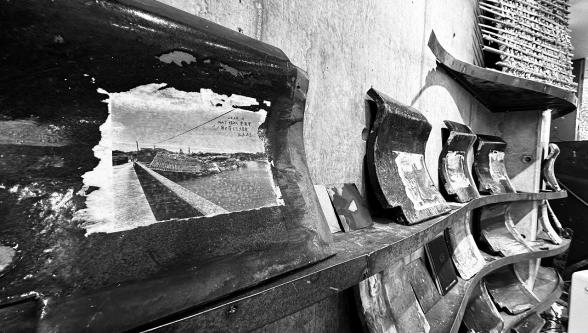
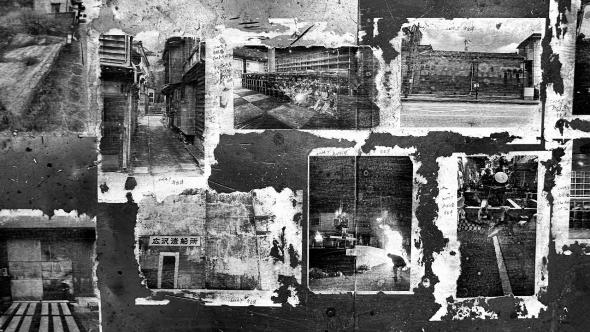
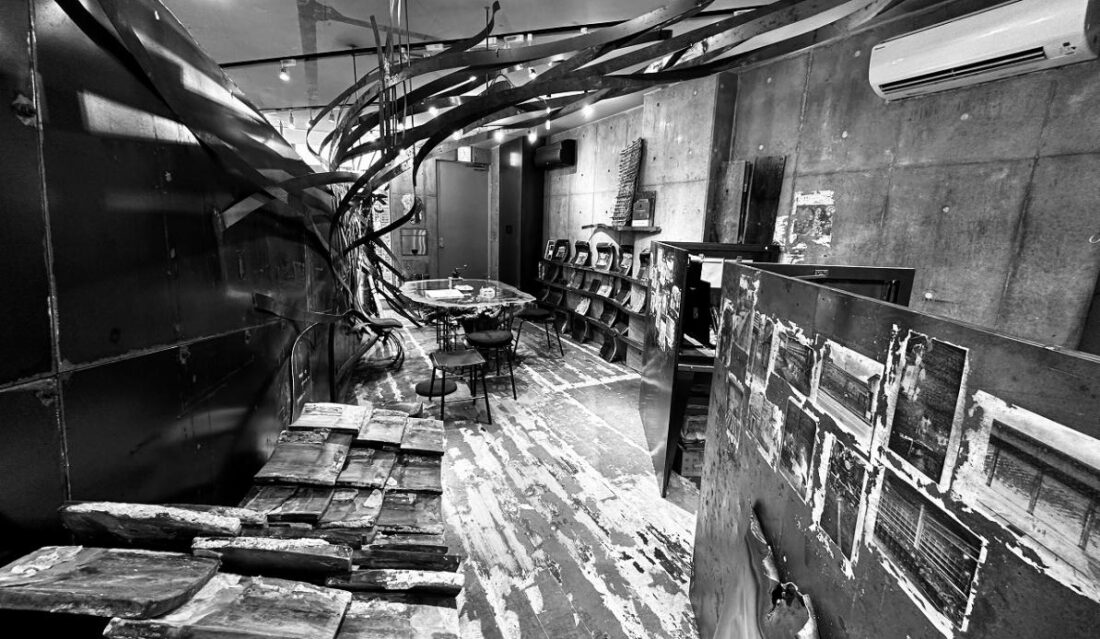
The indoor exhibition this time mainly consisted of photographs conveying activities in Noto in 2024, displayed alongside donated Noto roofing tiles and other items. The photo on the left shows the results of a project that Kubo started in the latter half of last year, in which he collects recycled iron from a factory in Sumida Ward, processes it, gives it functionality, and turns it into furniture and other items that quietly convey the daily lives of the people who work there. He plans to continue developing this initiative in the future.
Thank you to everyone who visited.
In the future, I hope to create a space where each person can enjoy everything from the materials to the space in a relaxed atmosphere.
The next “Special Exhibition” will be held in March. Please come and visit us.
<A small village where you can see the aurora>
When I leave Tokyo and go to places like Noto and Kyonan, memories of the many solo trips I took in my twenties come back to me. When I walk in the mountains of Noto and Kyonan, I can picture the scenes of my travels deep into nature back then.
What will become of Noto in the future? I find myself daydreaming about a future where, if we face nature head-on, a richer life awaits us, neither going back to the way it was, nor moving forward. Perhaps that would be a happier life for humans. Some might laugh at me and say, “We’re not in the Jomon period anymore…”
However, I feel that no matter where you live, there is a definite increase in people who are questioning their current lifestyles. Perhaps the small worlds I encountered during my travels that I would like to share with you today hold clues to answering these questions.
With that in mind, I’d like to share my experience in a small village where you can see the aurora. Apparently, this year is the year in which the frequency of aurora occurrences is at its highest in an approximately 11-year cycle. I found out much later that the year I visited the village was also the year with the best chances of seeing the aurora. I wonder if the aurora lights are still flickering in the sky over the village today?
◆ The Great Northern River Yukon
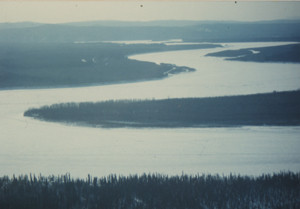

In January 1989, I was watching a TV program called “The Yukon, the Great Northern River” in my six-tatami-mat apartment.
It was a documentary that took place over six months from autumn to spring in a small village of 80 people on the banks of the Yukon River, which flows from east to west through central Alaska.
・・・・・・・・・
Autumn is a dynamic time when ice begins to flow from upstream on the river, increasing in volume as it crashes into other rivers with a thunderous noise, and giant chunks of ice sometimes even wash ashore and crush houses near the shore.
Eventually, the entire river is covered in ice, and the surroundings become silent, marking the start of winter. The aurora season begins. From the pure white ground, you can gaze up at the green band of light floating in the sky.
Then, with the thaw of spring, the ice melts again, and the river clears away with a roar.
・・・・・・・・・
I couldn’t sit still any longer, so a few days later, despite being a poor student, I bought a plane ticket to Alaska.
“I want to see the aurora in a small village on the banks of the Yukon River.”
On March 2nd, the plane took off for Anchorage.
◆ Until you reach the village
Anchorage is the largest city in Alaska, located in southern Alaska. First, I bought warm clothes and a sleeping bag that could withstand temperatures of minus 20 degrees. Then, I headed north to Fairbanks, a town closer to the Yukon River. The Yukon River flows another 150 km north from here.
As usual, I stayed at the cheapest hotel in Fairbanks. So, what should I do from here? First, I asked the lady at the hotel counter a question.
“I want to go to a small village on the banks of the Yukon River. How do I get there?”
The older sister pointed to an Indian woman sitting in the lobby and said, “She’s from that place, so talk to her.”
The lady was a small, ordinary woman wearing glasses. When I asked her the same question, she said, “I’m going back to the village tomorrow morning, so you can come with me.”
How lucky I am!
Following my aunt’s advice, I bought as much food as I could that night.
The next morning, we boarded a six-seater Cessna (a regular flight to the village) and headed to a small village on the banks of the Yukon River.
The Cessna flies low, and the winding Yukon River tributaries are awe-inspiring from the air.
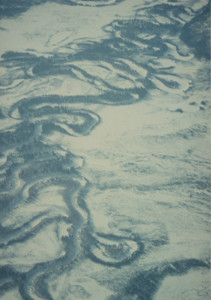
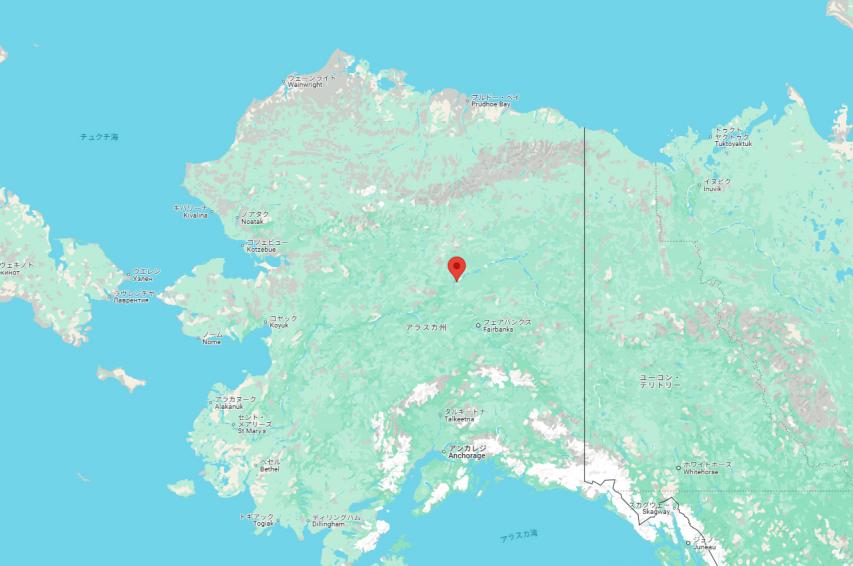
The image above right is from Google Maps. The red dot in the center is Stevens Village, a small village with a population of 80 where I spent about a month.
Rivers that flow through plains meander due to natural laws. In Japan, the Ishikari River in Hokkaido is a famous example. Where the river flows with even a slight curve, centrifugal force erodes the outer bank and fills in the inner bank with sediment. This alternating process creates a meandering river.
Just as the Ishikari River is famous for its salmon, the Yukon River is also home to gigantic king salmon. The villagers fish during the short summer, providing a year’s worth of work for the village. The men then leave to work in other areas in the winter. That’s the kind of village Stevens Village is.
◆ Log cabin
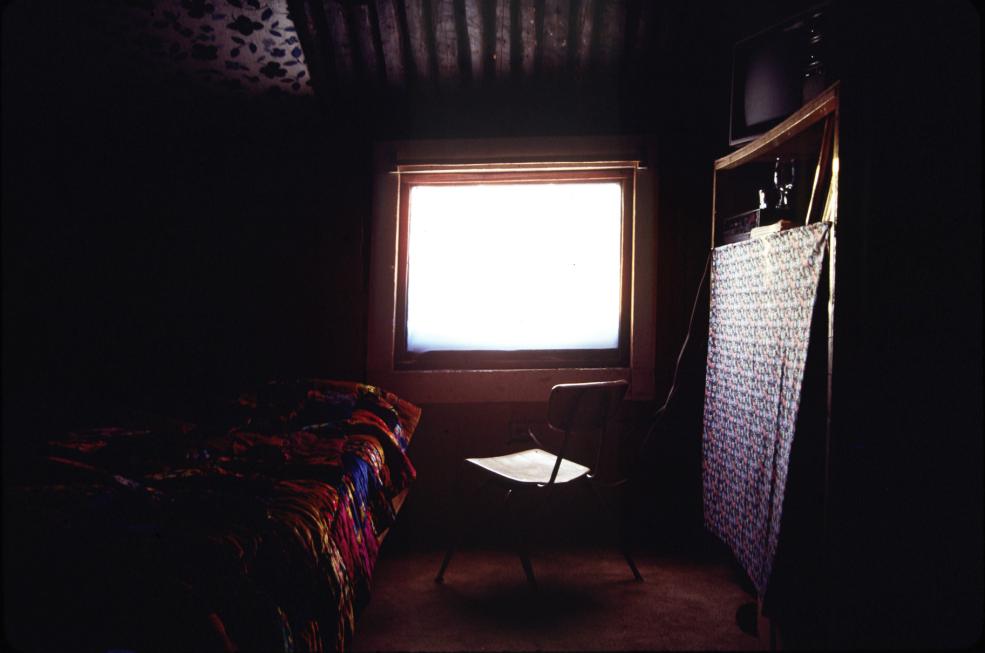

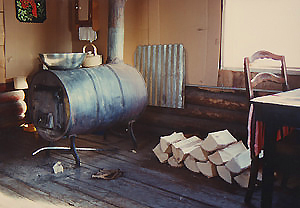
When we arrived at Stevens Village, we were shown to a small log cabin and told to use it. Apparently, it was usually occupied by the owner’s daughter.
I was introduced to his son Gary, who is about high school age, and he taught me all about life. The room had a small table, chair, small mirror, a wood-burning stove made from a drum that you could cook on, a bed, an old TV, a VCR, and a bucket with a lid that served as a toilet (lined with paper and soaked in disinfectant). (The photo on the top right shows the frost that forms on the vinyl window in various patterns every morning.)
Every day, I chop the amount of firewood I need. There is a shared water pump a few hundred meters away, and I travel there and back with a tank on my snowmobile. There are no showers, so I boil water and use it to dry my body. I stayed there for a month and never once felt inconvenienced.
The wood stove burns two types of firewood: coarse wood, which burns easily, when starting the fire, and then fine wood, which burns longer once the fire is lit. The temperature in the room is regulated by a combination of both.
There seemed to be only three types of trees growing around the village, two of which could be used for firewood – one open-grained and one tight-grained – so there were no other options.
Having left the city and experienced life in this remote village in the far north, like an island in the middle of the land, I realized that nature provides this village with just the right amount of everything needed for life to exist.
A moderate number of people live here, supported by the surrounding nature, maintaining a state of equilibrium. I find beauty in this state of equilibrium. For example, I find beauty in the story of this tree. It is as if nature has a “will.”
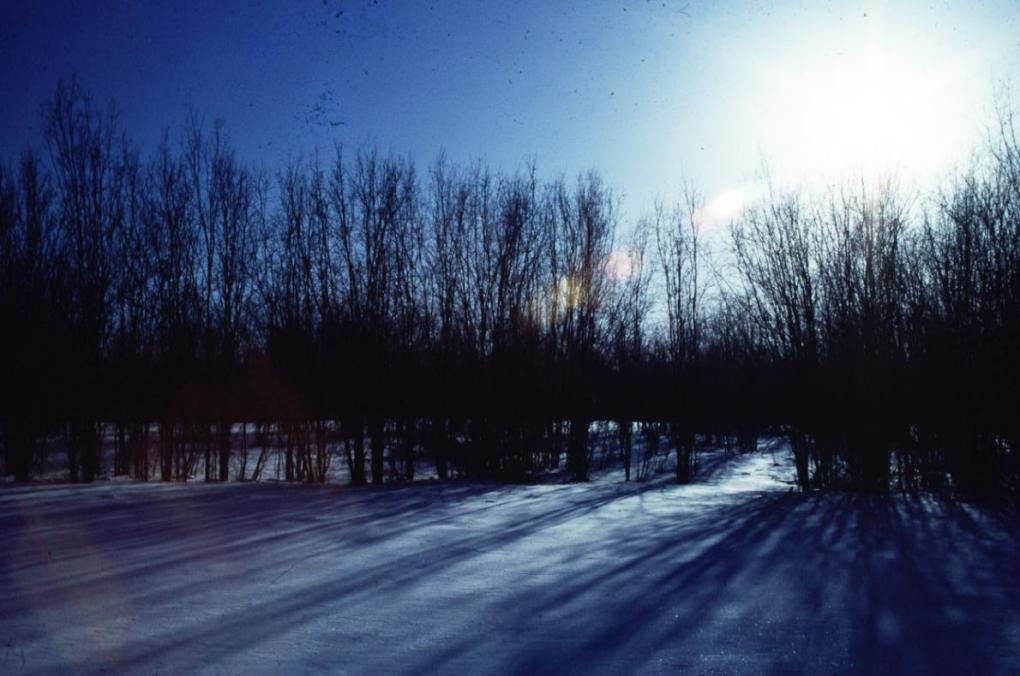
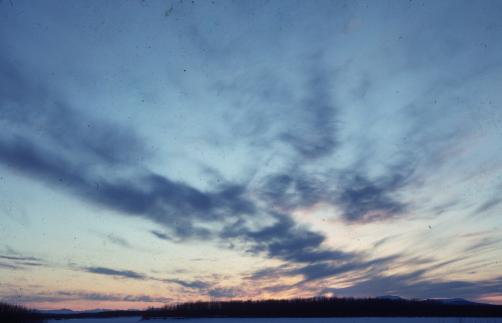
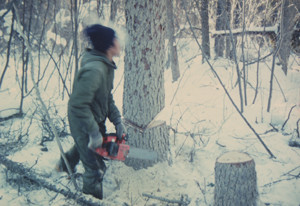
On the other hand, I think the reason they can survive in such a place with so few possessions is because the people who have lived there for generations have pooled their wisdom. When nature changes, people change too. In this way, they have continued to make efforts to maintain a balance.
When this balance is disrupted, people have to look to other regions for things, which creates a need for transportation. What is a village issue becomes a regional issue, and then a national issue, and then an issue for the entire planet. This is the 21st century in which we live.
The story of two trees expands to tens of thousands of species. The components are intricately intertwined. How much of what is happening on Earth can we possibly grasp and understand?
Is it really possible for us humans to maintain balance in such an expanded world?
◆ Aurora
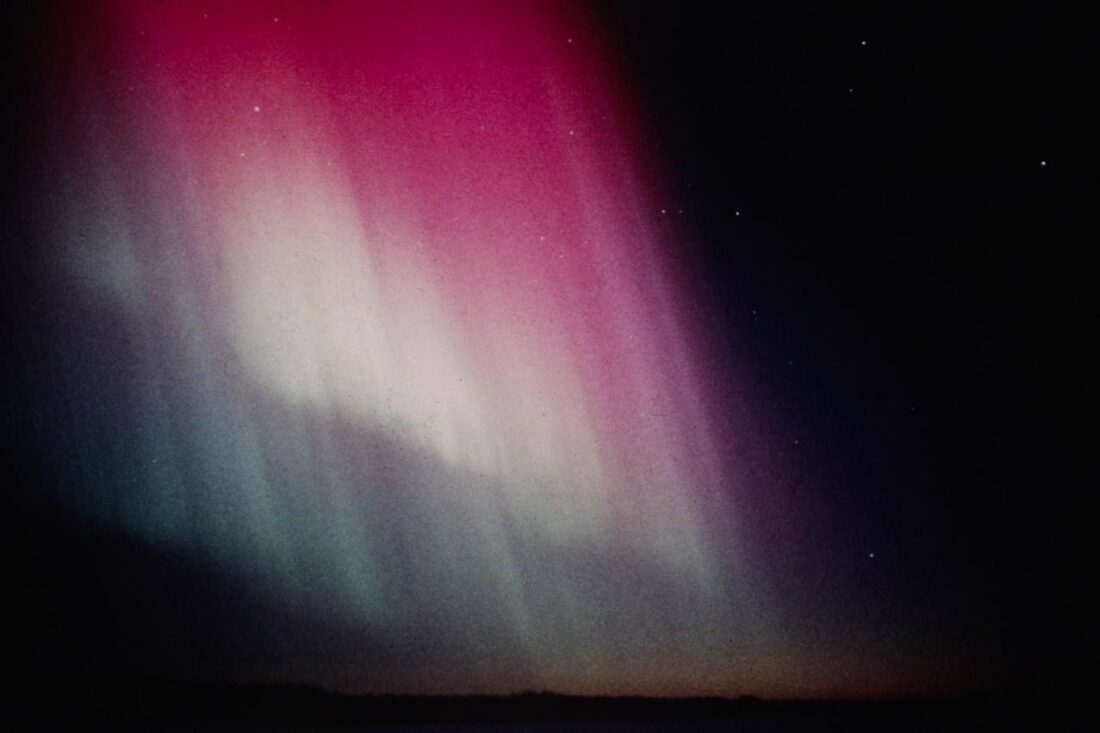
I remember being able to see the aurora almost every day until mid-March. I think I was able to see it most often between 8 PM and midnight.
Because we are close to the Arctic Circle, the movement of the sun is almost horizontal. It moves along the horizon, so it doesn’t set for a long time. Even after it sets, it doesn’t get dark for a long time. Anyway, when it got dark, we could see the aurora.
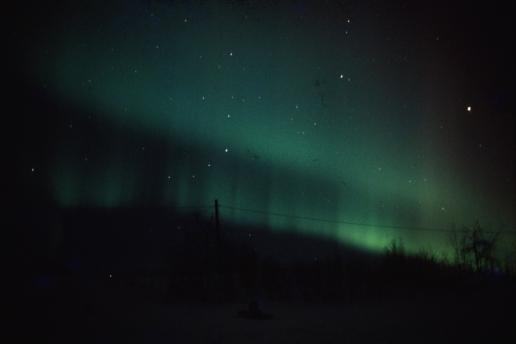
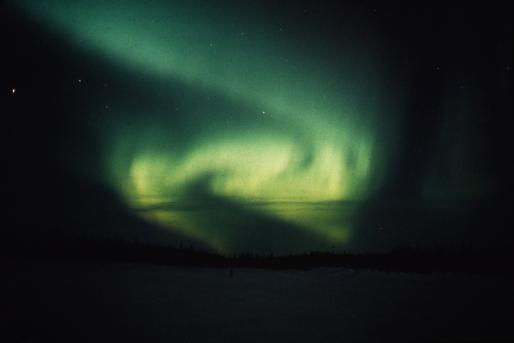
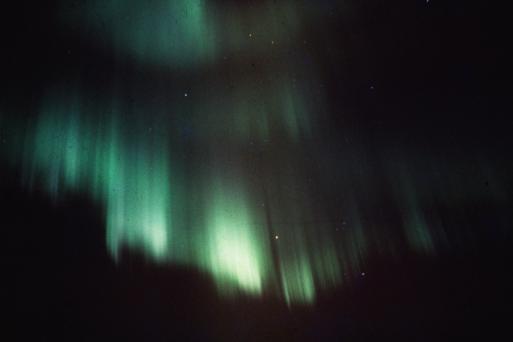
Everyone else in the village was a villager, and the aurora was just a part of everyday life for them, so I was always having fun by myself. So every day, I had the night sky all to myself.
Standing on the frozen Yukon River, I had the sky all to myself that day too. A 360-degree curtain of aurora hung from just above the horizon to mid-height.
I collapsed onto the snow, lay on my back, and looked up at the entire sky. To my heart’s content. Until my earlobes froze.
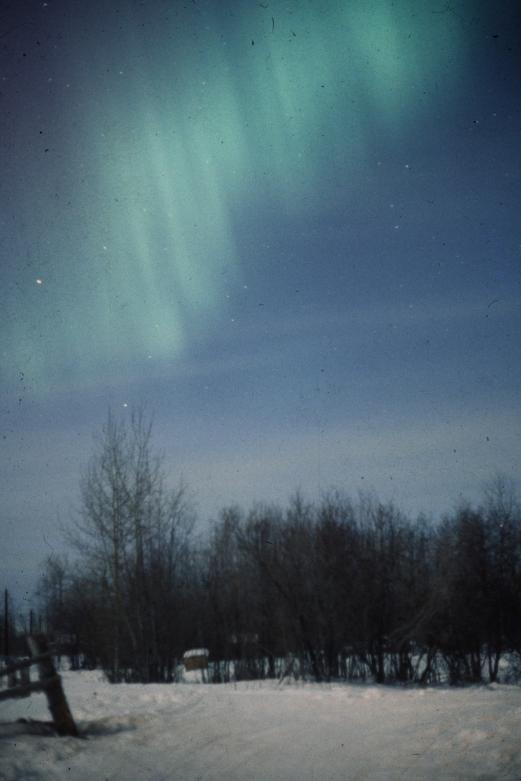
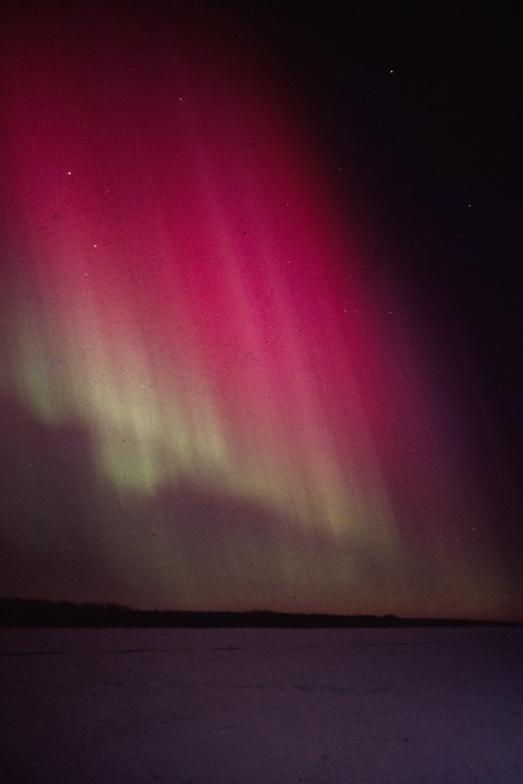
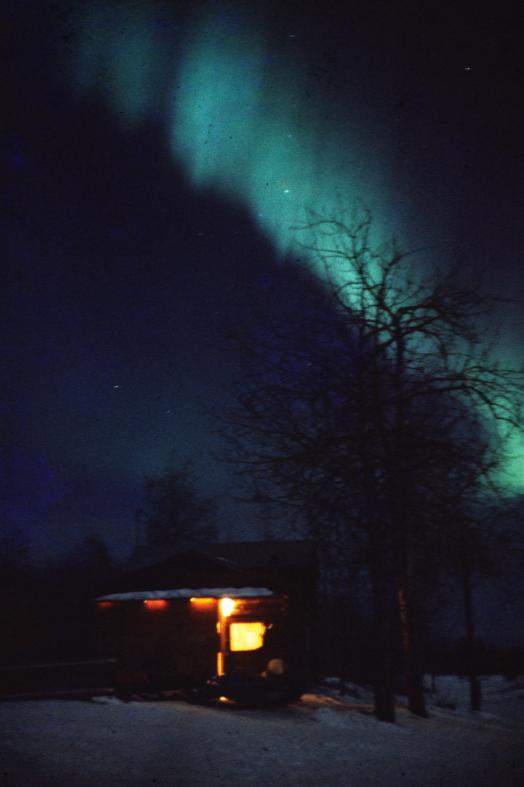
I felt a desire to share this emotion with someone, so I wrote many letters to Japan that afternoon. I still want to share it, and that’s why I’m writing this.
Can we believe that the personal will to “see the aurora” will never be fulfilled in our own world? Can we believe that every individual will is ultimately directed towards society?
I believe in this, and when people have the will to take action to make something a reality, I want to be the person who always supports them.
◆ Life in Stevens Village
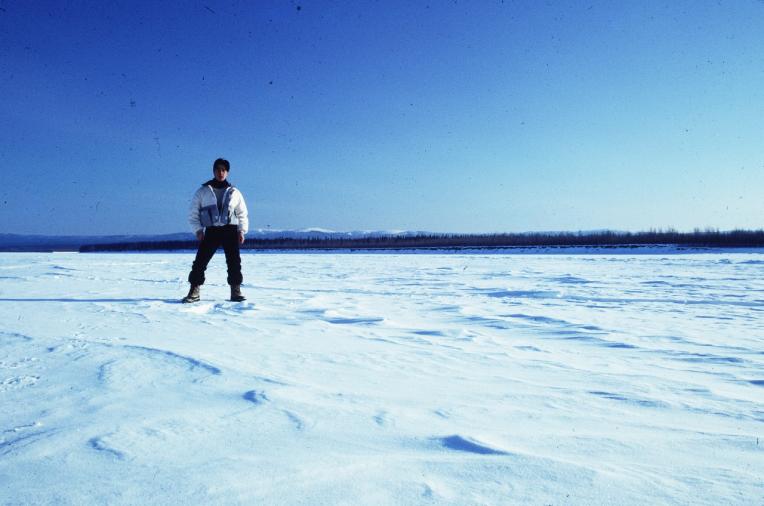
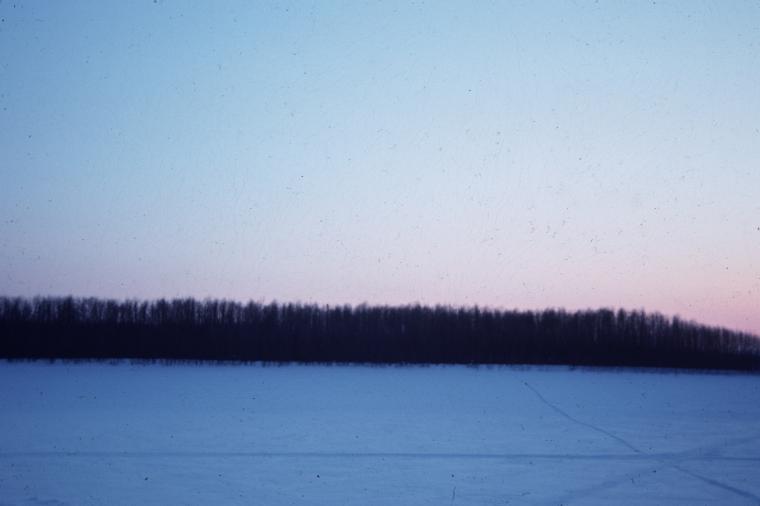
Because the surrounding area is closed off by snow, the range of movement during the day is extremely limited. Even though we go for a walk, the scenery doesn’t change much.
I feel the urge to go down to the frozen river and walk all the way upstream, but the weather won’t allow it. I’m sure I’ll never reach the next village, no matter how many hours I walk.
There are many oxbow lakes around the area, which are typical of areas around meandering rivers. Charlie’s father, a child who often comes to play at the log cabin, said he was going there to catch beavers, so we went along.
Beavers are used for food, fur, oil, and there is nothing to throw away.
I set up a simple trap that day and went back the next day to see if anything was caught. I followed them two or three times, but there was no change in the trap. At least I don’t have to worry about the beaver population decreasing lol.
・・・・・・・・・
On another day, Gary went into the forest to cut down trees for firewood, so I accompanied him. It was unbearably cold in the forest, where no sunlight reached. Gary, a high school student, did all the work around him. He cut down the trees into moderately sized pieces, put them on a sled, and pulled them home on a snowmobile.
I don’t know if you need a license to ride a snowmobile, but in this town where there are no police officers, it shouldn’t be a problem, and even children ride them around.
However, as far as I knew, no one drank alcohol. Perhaps it was because you would die if you slept outside. Perhaps it was a rule in a village with a population of only 80 people.
・・・・・・・・・
When I travel to warm places, the locals laugh a lot. I can laugh about anything. But that’s not the case in cold places.
That day, I rented a snowmobile and took Charlie and his friends, who were about 5 years old, on a ride to get drinking water. The kids thought of me as a playmate and followed me everywhere. The place was a little far from civilization. After getting water, when I tried to go back, the snowmobile engine wouldn’t start. I was stuck there for 10 to 20 minutes, trying various things.
Eventually, Charlie’s father came over. He seemed worried because Charlie wasn’t coming home soon. He must have had a knack for it, but once he tried, the engine started right away.
I smiled and said “Thank you,” and he gave me a silent, sharp look in return. I will never forget that look in his eyes.
People who live in cold places cannot survive unless they can do everything themselves. I was made to realize that I was a lukewarm person who did not deserve to be there.
・・・・・・・・・
This village of 80 people has not remained unchanged for a long time. Even though it is an isolated island, the waves of civilization are still rolling in.
Dog sleds were replaced by snowmobiles. The snow left behind by snowmobiles became too hard, causing injuries to the dogs’ paws. The Siberian dogs that once supported the livelihood of the people no longer had a functional role to play, and are now kept as pets, except for the occasional dog sled race.
And there was a TV in the village, a VCR in the log cabin, though the reception for terrestrial TV was poor, so we rarely watched it.
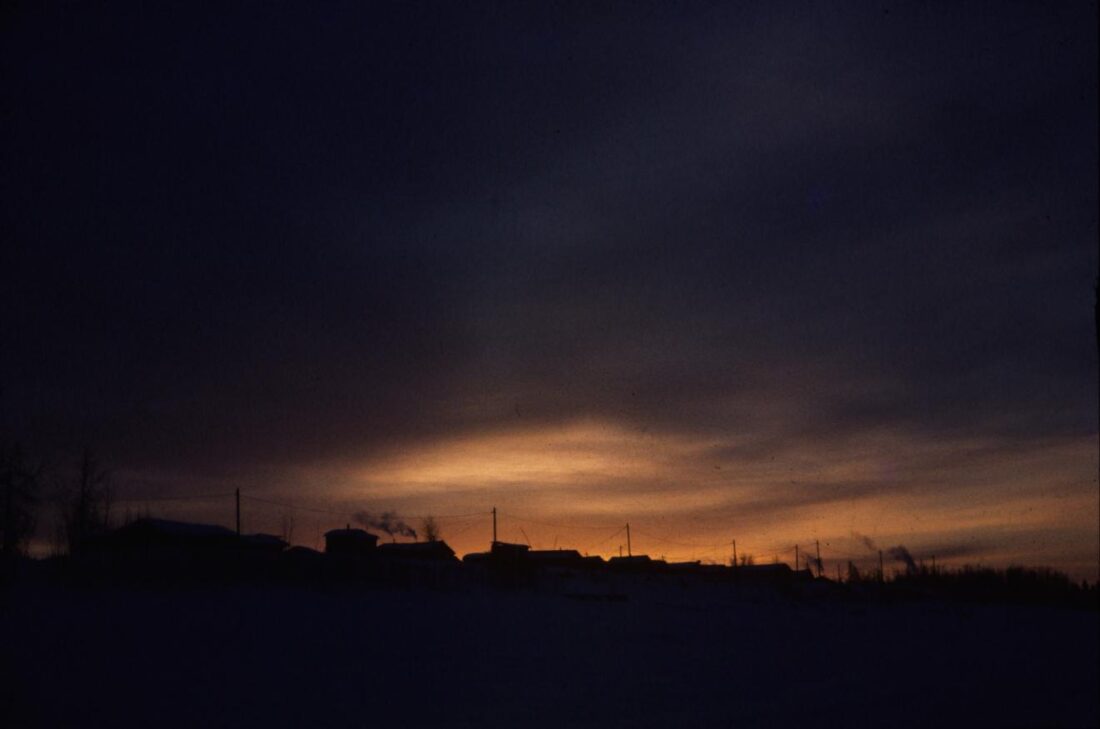
◆ Miracle
After we had been in the village for quite a while, Gary brought me a videotape.
I pressed play and was stunned for a moment… It was “The Yukon River,” the great northern river that I had seen in my six-tatami-mat apartment in Japan in January of that year.
The show features interviews with captions for everyone, including Jenny, the mother I spoke to at the hotel, Gary, who was sitting right in front of me, and the children I played with, including Henry Jr. and Charlie.
I didn’t realize this fact until then, as I only remembered it as a “small village on the banks of the Yukon River.”
…Before I knew it, I had entered the television screen.
・・・・・・・・・
How could something like this happen? Why was the world so kind to me then?
Of course, I don’t know the answer.
But you know the beginning.
“I want to see the aurora in a small village on the banks of the Yukon River.”
It’s having this “will.”

If there is a will, it can be achieved. I don’t know if I should believe that. I think I’ll have to save the answer for when I die.
However, I believe that at the very least, pure will has power. From that moment on, I may have changed a little. I began to ask myself if, if my will was not fulfilled, it was probably because there was something unnecessary clinging to it.
◆ Farewell
On the day we left the village, Gary drove me several dozen kilometers on his snowmobile over the frozen Yukon River to the main road, because I had selfishly said, “I want to hitchhike home.”
When we reached the main road and said goodbye, Gary said to me:
“When the ice melts, the whole world will turn green. All the living creatures will wake up and become lively. We’ll set sail, catch lots of king salmon, and earn a year’s worth of money. It’ll be much more fun than it is now. Come back then.”
It seems that the short summer is also a very intense one. I hear that the insects are also very active.
I’m sure what he wanted to show me was summer, a time when all life is vibrant.
A large truck driver gave us a ride to Fairbanks.
“What were you doing?”
“It’s a spring break trip for college.”
“…If it were me, I’d spend the day lying on a warm beach.”
January 31, 2025 GRIDFRAME Toshiro Tanaka

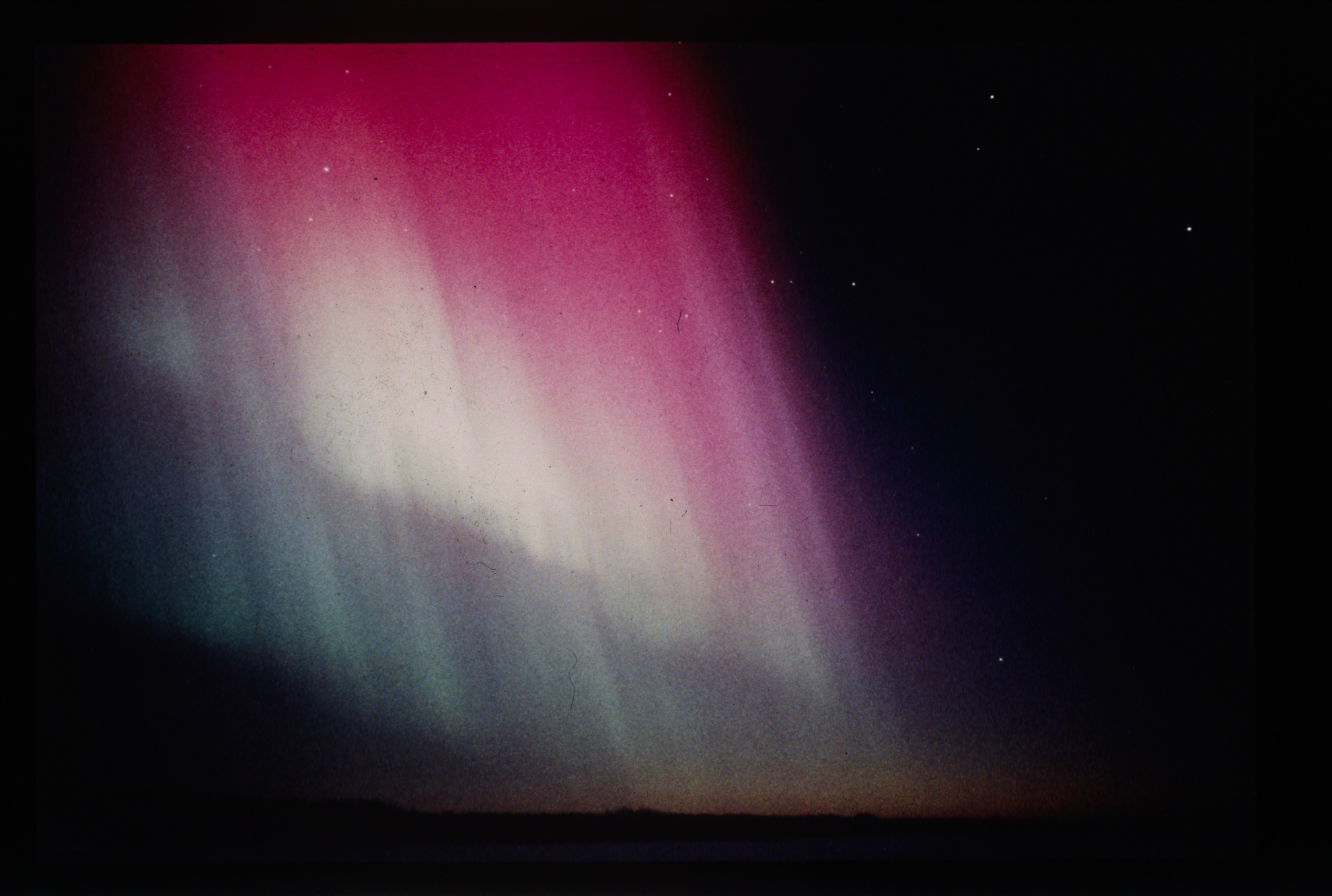
Comments are closed